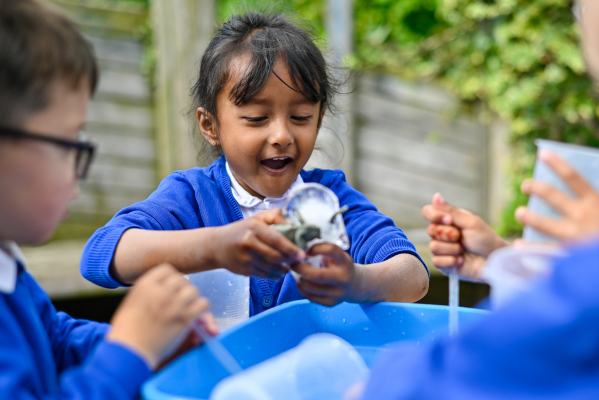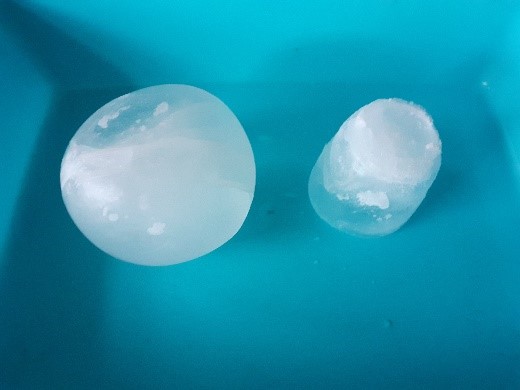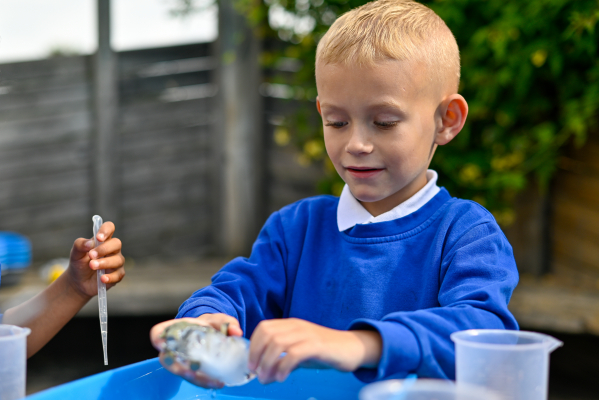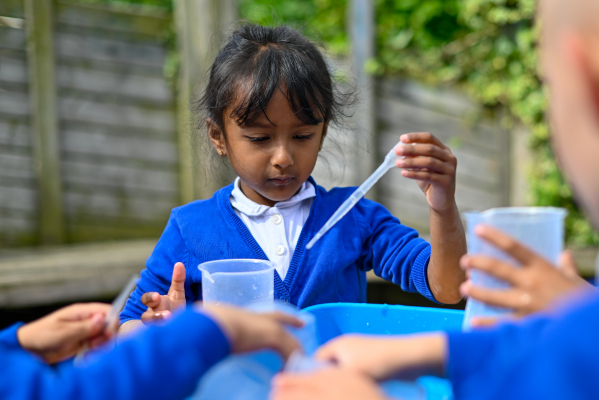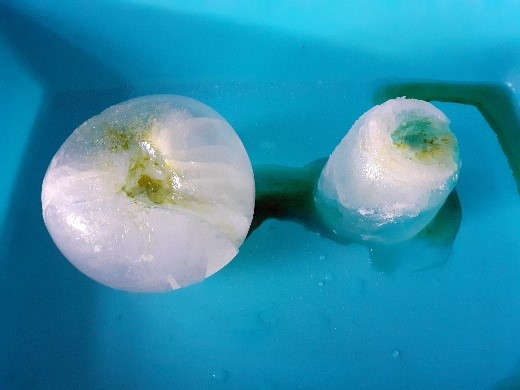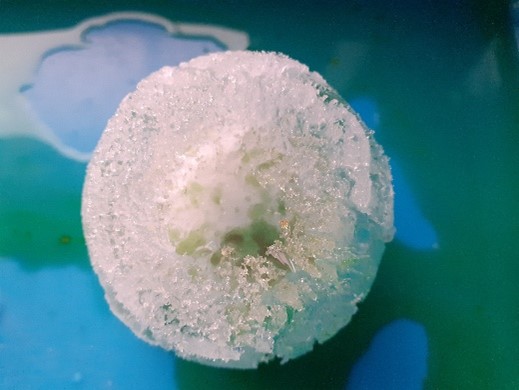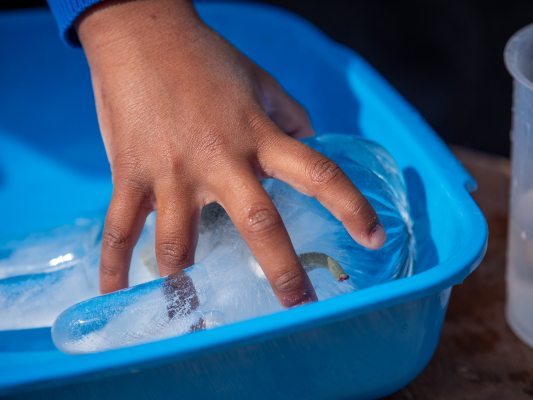What you’ll need
- Ice frozen in a variety of shapes and sizes- water balloons and plastic containers such as yoghurt pots make good larger moulds.
- Water
- A freezer
- Tough spot or tray
- Pipettes (or plastic straws if you don’t have any)
- Beakers of warm water coloured with food colouring
- Salt
- The glaciologist poster
Duration
- 20 minutes or so to prepare the containers for freezing
- Freezing time
- 10 minutes or so for the activity
Support children to investigate how they can make ice melt.
Early Learning Goal links
- Understanding the World ELG: Past and Present
- Understanding the World ELG: People, Culture and Communities
- Understanding the World ELG: The Natural World
Characteristics of effective learning
Our EYFS units provide enabling environments with teaching and support from adults. Reflecting on the characteristics of effective teaching and learning, children will have opportunity to learn and develop by:
• playing and exploring – children investigate and experience things, and ‘have a go’
• active learning – children concentrate and keep on trying if they encounter difficulties, and enjoy achievements
• creating and thinking critically – children have and develop their own ideas, make links between ideas, and develop strategies for doing things
Taken from Statutory Framework for the Early Years Foundation Stage.
© Crown copyright 2023 licensed under the terms of the Open Government Licence v3.0.
STEM vocabulary to introduce
Freezing, cold, solid, hard, melting, wet, dripping, smooth, shiny, white, crystals, see through, cloudy.
Before you start
Freeze water in your containers overnight. Remove the ice from the moulds and place on a tough spot or in a tray.
Ask the children if they know what a glaciologist does. Show them the glaciologist poster. A glaciologist is a scientist who studies glaciers. Glaciers are huge lump of ice found in mountains or near the poles which move slowly towards the sea.
Tell the children of the attributes. Glaciologists are:
Curious: glaciologists want to know more about how the ice in glaciers is made.
Observant: glaciologists look at the ice carefully to see what colour and shape it is.
Resilient: glaciologists need to be able work in cold and windy conditions. They need to be quick to recover and get back out in the cold again each day.
Tell the children that today they are going to be curious like glaciologists and find out how ice melts. They will need to be observant like glaciologists and watch what happens when you try different ways to melt the ice. Tell the children they will need to be resilient as the ice isn’t going to melt straight away.
What to do – step 1
Tell the children they are going to be glaciologists and look carefully or observe the ice.
You could ask:
What shape is the ice?
What colour is the ice?
Is it the same colour all over?
What can you see inside the ice?
What does the ice feel like?
Step 2
Provide the children with pipettes (or plastic straws) and a beaker of warm water mixed with food colouring. The colour helps the children see what the warm water is doing to the ice. Tell them that glaciologists are curious about what makes ice melt. Ask the children what they think or predict will happen when they drip warm water on the ice.
Ask the children to drip the water onto the ice and to observe what happens.
You could ask:
What has happened? What has changed?
What can you see in the bottom of the container?
Has all of the ice melted?
What does the ice look like now?
What can you see inside it?
What can you hear?
What do you think will happen next?
Step 3
Step 3: Now provide the children with some salt. You may want to give them this in a salt shaker or in a container with a spoon. Ask the children to sprinkle salt on to the ice and to observe what happens.
You could ask:
The questions from step 2 again and see if the answers have changed.
Which shapes are melting the quickest?
Do you think the salt is making them melt faster?
Other things to try
Leave the ice, pipettes, water and salt out for the children to investigate. Ask the children how long they think it will take the ice to melt.
Challenge the children to melt the ice as quickly as they can using the salt and warm water.
The science of melting
We have put together some useful information about the science of melting to accompany this activity. Don’t worry this is for your information only and to help you answer any questions children may have. We don’t expect you to explain this to the children in your setting!
How does water freeze?
The molecules in water are constantly moving. In a liquid, the molecules move more, and faster, than in a solid. As the liquid cools down the molecule movement slows down. When the water temperature reaches around 0°C, the molecules are closer together and weak bonds form between them. They form a solid that we call ice.
Why does ice melt?
When ice is heated, the molecules which are held together by weak bonds, start to vibrate more vigorously. As the temperature of the water rises above 0°C the movement of the molecules is enough to break the bonds between them and liquid water forms.
Why does warm water make ice melt faster?
The molecules in the warmer water are moving faster. The molecules collide with the less mobile molecules of the ice and cause them to vibrate more and the ice to melt more quickly than it would otherwise do.
Why does salt make ice melt faster?
Salt lowers the freezing point of water. This is called “freezing point depression.” The salt makes it harder for the water molecules to bond together to form a solid.
Why does the surface of the ice melt faster?
During melting, the water molecules gain energy and vibrate more. The energy is transferred from the water, air or object surrounding or touching the ice. It takes time for the ice molecules at the centre of the cube to vibrate enough to break the bonds.

